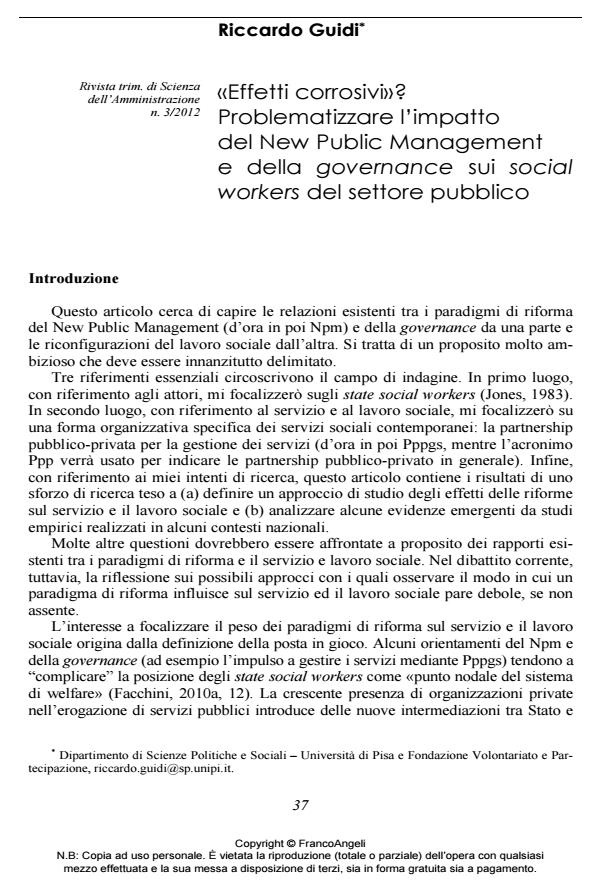"Corrosive effects"? Problematizing the impact of New Public Management and governance reforms on state social workers
Journal title RIVISTA TRIMESTRALE DI SCIENZA DELL’AMMINISTRAZIONE
Author/s Riccardo Guidi
Publishing Year 2012 Issue 2012/3
Language Italian Pages 16 P. 37-52 File size 540 KB
DOI 10.3280/SA2012-003003
DOI is like a bar code for intellectual property: to have more infomation
click here
Below, you can see the article first page
If you want to buy this article in PDF format, you can do it, following the instructions to buy download credits

FrancoAngeli is member of Publishers International Linking Association, Inc (PILA), a not-for-profit association which run the CrossRef service enabling links to and from online scholarly content.
This paper contains some methodological and substantial considerations about the effects of New Public Management and governance reforms on social work. In the first part the main features of the reformer paradigms are briefly exposed. The second part tries to identify some crucial elements of a non-mechanicistic approach to study public administration innovation. The third part shows some findings in international literature about the changes in social work. About Italy, the author reviews some datas from two national surveys at the turn of italian welfare reforms of ’2000s. The paper concludes that a study of the effects of the reforms on social work needs to take into account many "translation variables" of the reforms (path-dependent and actordependent). At theoretical level, it suggests to "contaminate" sociological neoinstitutionalism and Actor-Network Theory.
Keywords: New Public Management, governance, social work
- The Palgrave Handbook of Global Social Work Education Tatiana Saruis, Stella Volturo, pp.985 (ISBN:978-3-030-39965-8)
Riccardo Guidi, "Effetti corrosivi"? Problematizzare l’impatto del New Public Management e della governance sui social workers del settore pubblico in "RIVISTA TRIMESTRALE DI SCIENZA DELL’AMMINISTRAZIONE" 3/2012, pp 37-52, DOI: 10.3280/SA2012-003003